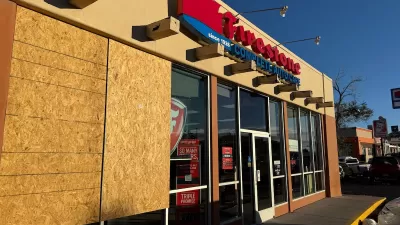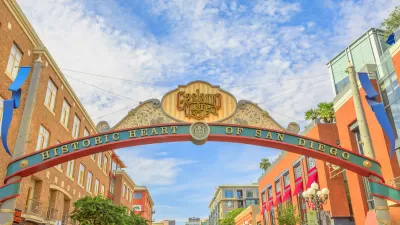Adaptive reuse can help the old become the new, honoring our history and desire for efficiency along the way. This piece highlights 10 examples of adaptive reuse projects from around the west, depicting them in their before and after states.
Refurbishment, rehabilitation, retrofitting, adaptive reuse: Call it what you will, but the transformation of an existing building from one state to another can be an effective way to build community. At its most basic level, adaptive reuse takes an existing structure and modifies it to be used as something else. An auto repair shop renovated to serve as a diner. An empty warehouse turned into office spaces.
Throughout the country we have hundreds—thousands—of examples of existing structures that are under-used, or not used at all, that with the right investor and market conditions could be re-purposed into something new, alleviating the need for new construction.
Adaptive reuse is a sign that our towns are healthy, and worthy of new investment. Plus, there’s something a bit sad about leaving old buildings behind, then going somewhere new and putting all our time and energy into creating shiny new buildings far from our town center. In 10 or 20 years, those buildings begin to age and we repeat the process all over again. The buildings in these examples are a reversal of that process. They represent the idea that, with a bit of creativity and elbow grease, even the most downtrodden of our old town buildings can find new life. In a world where things fall apart, it’s nice to know we can put them back together again.
FULL STORY: Adapt and Reuse: Transforming the Old to the New

Maui's Vacation Rental Debate Turns Ugly
Verbal attacks, misinformation campaigns and fistfights plague a high-stakes debate to convert thousands of vacation rentals into long-term housing.

Planetizen Federal Action Tracker
A weekly monitor of how Trump’s orders and actions are impacting planners and planning in America.

In Urban Planning, AI Prompting Could be the New Design Thinking
Creativity has long been key to great urban design. What if we see AI as our new creative partner?

King County Supportive Housing Program Offers Hope for Unhoused Residents
The county is taking a ‘Housing First’ approach that prioritizes getting people into housing, then offering wraparound supportive services.

Researchers Use AI to Get Clearer Picture of US Housing
Analysts are using artificial intelligence to supercharge their research by allowing them to comb through data faster. Though these AI tools can be error prone, they save time and housing researchers are optimistic about the future.

Making Shared Micromobility More Inclusive
Cities and shared mobility system operators can do more to include people with disabilities in planning and operations, per a new report.
Urban Design for Planners 1: Software Tools
This six-course series explores essential urban design concepts using open source software and equips planners with the tools they need to participate fully in the urban design process.
Planning for Universal Design
Learn the tools for implementing Universal Design in planning regulations.
planning NEXT
Appalachian Highlands Housing Partners
Mpact (founded as Rail~Volution)
City of Camden Redevelopment Agency
City of Astoria
City of Portland
City of Laramie





























